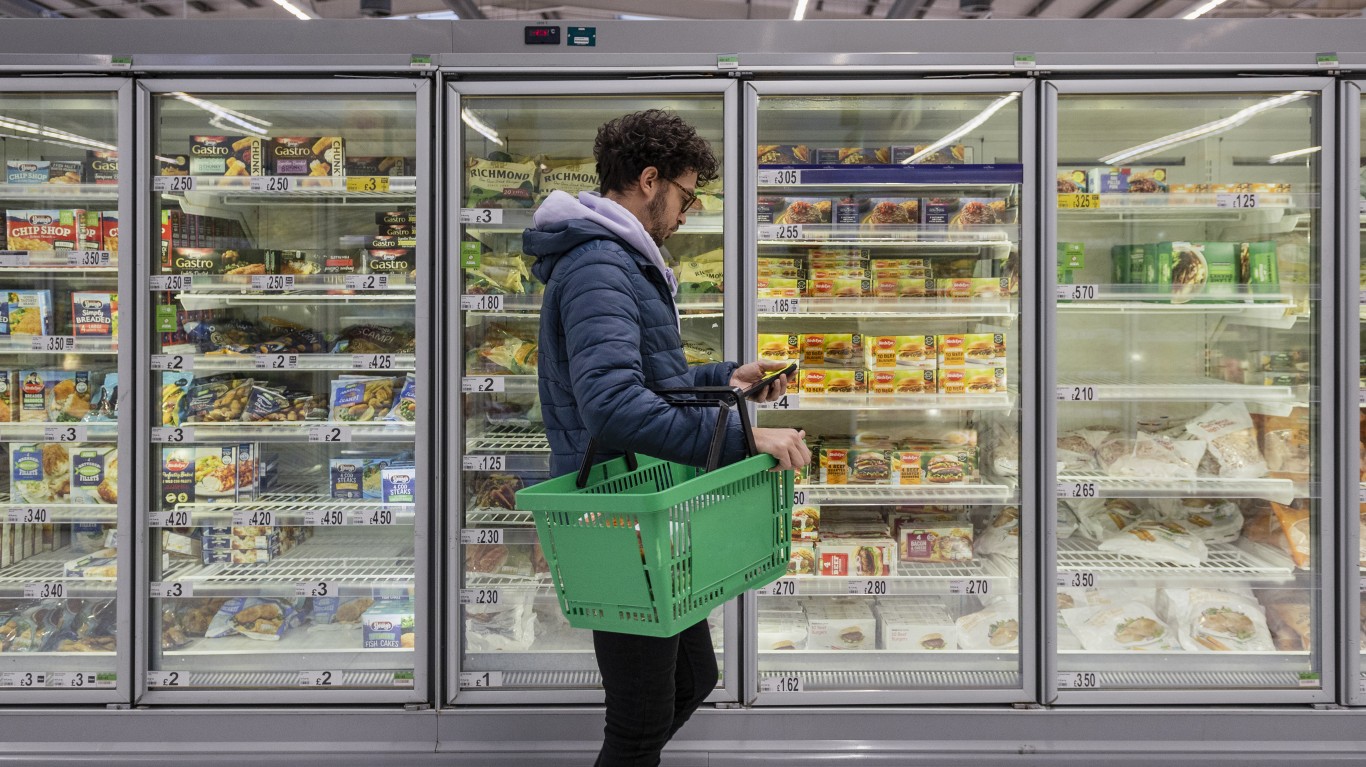
Inflation has been hovering above the 3% threshold for more than three years, perpetuating the sticker shock consumers have been experiencing since the pandemic. Every monthly increase to the Consumer Price Index (CPI), no matter how modest, is heaped on top of already elevated prices, creating a dangerous compounding effect as well as a boiling frog phenomenon for the unaware.
You have to look beneath the surface for a reality check. In April, the CPI inched higher by 0.3% month-over-month, beating consensus estimates and suggesting that inflation is finally cooling. But over the past 12-month period, prices are up a steeper 3.4%, far above the Fed’s 2% target. That explains why households have yet to feel any relief in their electricity bills or at the grocery store.
Unfortunately, conditions are even worse than they appear. In 2023, consumer prices hovered nearly 5% higher than they were in 2022, demonstrating the compounding effect that’s unfolding. Since the pandemic, inflation has climbed a shocking 21% higher, as noted by the Irrelevant Investor, with some categories even surpassing that rate.
Price increases are more apparent in individual categories that comprise the CPI than the broader index, more than 50% of which are rising at a 4% clip or higher on average, with segments like auto insurance and healthcare causing the most pricing pain.
Stock Market Disconnect
Nevertheless, based on stock valuations, it appears there’s a disconnect between the stock market and interest rates as investors celebrate the Dow Jones Industrial Average’s 40,000 milestone amid a major rally that put it over the top. Investors are bullish but appear to be sticking their heads in the sand on inflation, as though there’s an interest rate cut waiting just around the corner, or at least in September. Or maybe they’ve simply stopped caring.
The reality is the Fed’s efforts to combat inflation have been one step forward and two steps back, resulting in nothing but uncertainty on monetary policy strategy. By the looks of things, Fed Chairman Jerome Powell would be hard-pressed to cut rates with unwieldy inflation still roaring its ugly head. By drilling down into the numbers, it becomes clear just how much and quickly prices have been increasing of late, creating a new normal in a post-pandemic economy.
The following data represents price increases for individual categories that go into the CPI over the last 12-month period, as reported by the Bureau of Labor Statistics:
| Item | 12-Month Inflation to April 2024 |
| Car Insurance | 22.6% |
| Transportation | 11.2% |
| Hospital Services | 7.7% |
| Auto Repairs | 7.6% |
| Homeowner | 5.8% |
| Rent | 5.4% |
| Gas Utility | 5.1% |
| Food Away From Home | 4.1% |
The Average American Has No Idea How Much Money You Can Make Today (Sponsor)
The last few years made people forget how much banks and CD’s can pay. Meanwhile, interest rates have spiked and many can afford to pay you much more, but most are keeping yields low and hoping you won’t notice.
But there is good news. To win qualified customers, some accounts are paying almost 10x the national average! That’s an incredible way to keep your money safe and earn more at the same time. Our top pick for high yield savings accounts includes other benefits as well. You can earn up to 3.80% with a Checking & Savings Account today Sign up and get up to $300 with direct deposit. No account fees. FDIC Insured.
Click here to see how much more you could be earning on your savings today. It takes just a few minutes to open an account to make your money work for you.
Our top pick for high yield savings accounts includes other benefits as well. You can earn up to 4.00% with a Checking & Savings Account from Sofi. Sign up and get up to $300 with direct deposit. No account fees. FDIC Insured.
Thank you for reading! Have some feedback for us?
Contact the 24/7 Wall St. editorial team.





